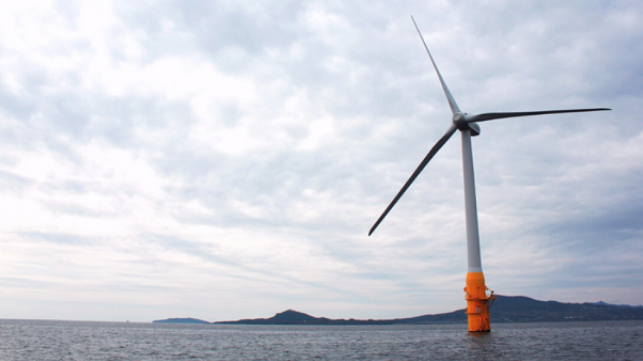Scottish Government Funds Floating Wind Technology Developers

The Floating Wind Technology Acceleration Competition run by the Carbon Trust's Floating Wind Joint Industry Project has announced eight technologies to receive Scottish Government funding and developer support.
The competition was designed to address key industry challenge areas that need to be overcome to commercialize floating wind: monitoring and inspection, mooring systems, heavy lift maintenance and tow to port maintenance. The eight technologies will receive a share of £1 million from the Scottish Government in addition to support from the 14 leading offshore wind developers represented in the Floating Wind JIP.
Floating wind is forecast to scale up to 12GW of capacity globally by 2030, becoming a market estimated to be worth £32 billion. In Scotland, the draft Sectoral Marine Plan for Offshore Wind Energy, outlines the Scottish Government’s plans to deliver up to 10GW of offshore wind, the majority of which will be in deeper waters suitable for floating wind.
The companies and their winning technologies are:
Fugro, AS Mosley, and University of Strathclyde (monitoring and inspection)
Condition monitoring software which uses readily available acceleration and motion data points from floating offshore wind structures to extrapolate how the wider structure responds to stress. It will characterize the condition of mooring lines of floating wind turbine assets in respect of wear, corrosion and fatigue. Reducing or eliminating the requirement for visual inspection by remotely operated vehicles and divers will reduce costs and offshore health and safety exposure.
Technology from Ideas and WFS Technologies (monitoring and inspection)
A load monitoring system to identify stresses on mooring lines and times when maintenance is needed. The monitoring system will be integrated into an existing spring, which also acts as a dampener on mooring lines and is powered by movement of the lines.
Dublin Offshore (mooring systems)
A load reduction device that sits partway up the mooring line and pivots in the water to minimize movement of the floating platform during wave events.
Intelligent Mooring Systems and University of Exeter (mooring systems)
A new pressure-based dampener which sits between the platform and mooring line to reduce the load on floating platforms.
RCAM Technologies and the Floating Wind Technology Company (mooring systems)
A concrete anchor, produced using 3D printing technology, which is sunk and then embedded in the seabed through suction.
Vryhof (mooring systems)
An adjustable lock on the seabed used to manipulate the tension of the mooring lines. This is an alternative to a winch sitting on the turbine platform and enables vessels to adjust the tension of mooring lines at a safe distance from the platform.
Conbit (heavy lift maintenance)
A temporary crane which sits on top of the turbine (the nacelle) to winch parts up and down for maintenance. This could enable larger turbines to be serviced offshore than is currently feasible.
Aker Solutions (tow to port maintenance)
A splice box connecting two dynamic array cables, allowing them to be wet-stored on the seabed when a turbine is towed to port. This will also enable an array of floating wind turbines to remain operational when one floating platform is removed for maintenance.
